While pulling together parts for my microscope build, I also saw that the supplier I bought some of my lenses from (Best Scientific, Wiltshire UK), had a Zeiss Luminar 25mm f3.5 lens available. It was an early lens (version 1), but the price was good so I bought it.
The Zeiss Luminars are renowned as pretty special lenses for macro work, and cover a huge image circle, so are great for full frame sensor cameras (and much larger sensors too if you have deeper pockets).
I got to wondering whether it would be any good for UV work, so I ran a transmission test on it using my UV transmission rig, and was amazed to see it had great UV transmission, letting light through down to about 300nm.
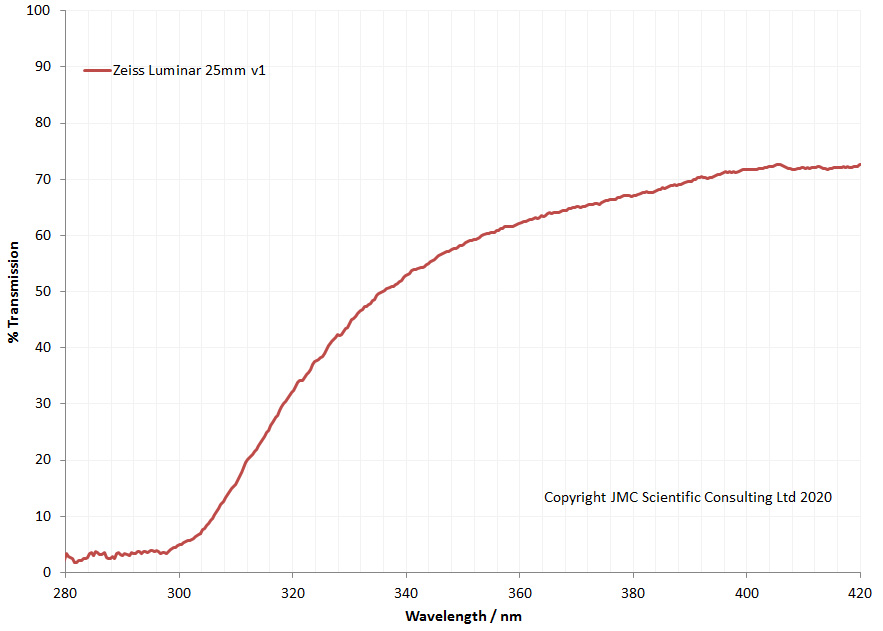
This type of transmission is fairly unusual without resorting to specialised UV lenses, and it made me wonder what UV images using this would be like. I attached the lens to my modified Nikon d810 (modified for UV imaging by ACS, UK), using an 80mm extension tube, resulting in a magnification of about 4x. The camera sensor has been modified to be sensitive to UV between 320nm and about 380nm. For lighting I used a Hamamatsu LC8 200w Xe lamp, about 12cm from the subject, in this case a Common Dandelion from the garden. Setup is shown below.
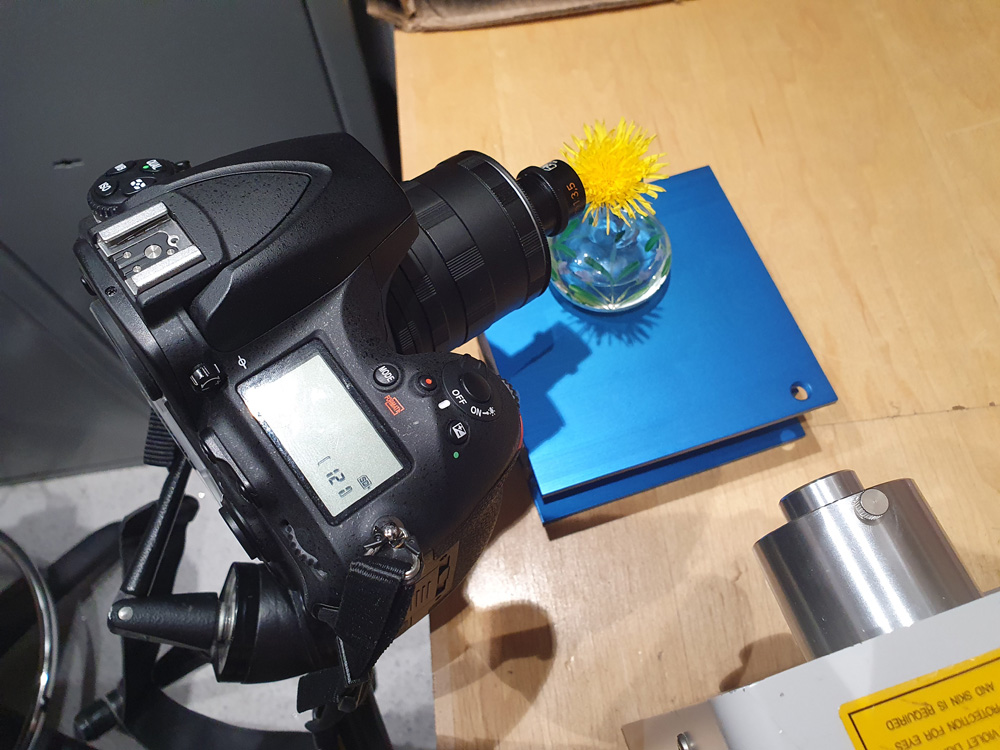
As you can see from the image above working distance is small. Very small. Of course depth of field is tiny too, although the Zeiss Luminar does have an adjustable aperture which is very handy.
How do the images look? I took some images of the middle part of the flower, and then whitebalanced them in Darktable, after also taking some images of a Labsphere diffuse reflectance standard under the same UV lighting. Examples below, taken with an aperture setting of about 8 on the lens.
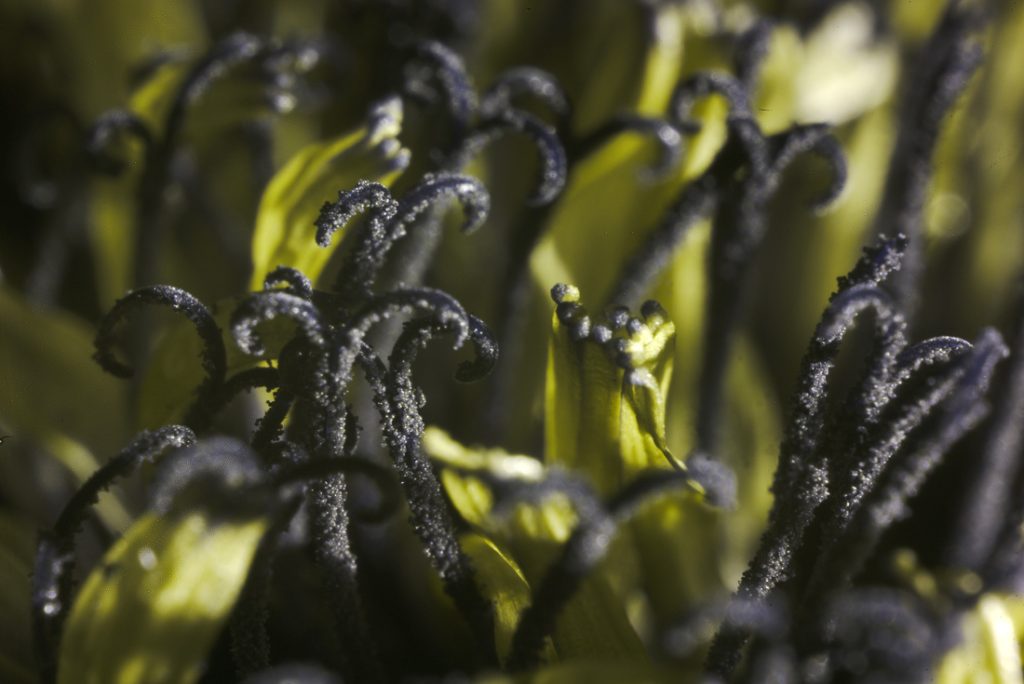
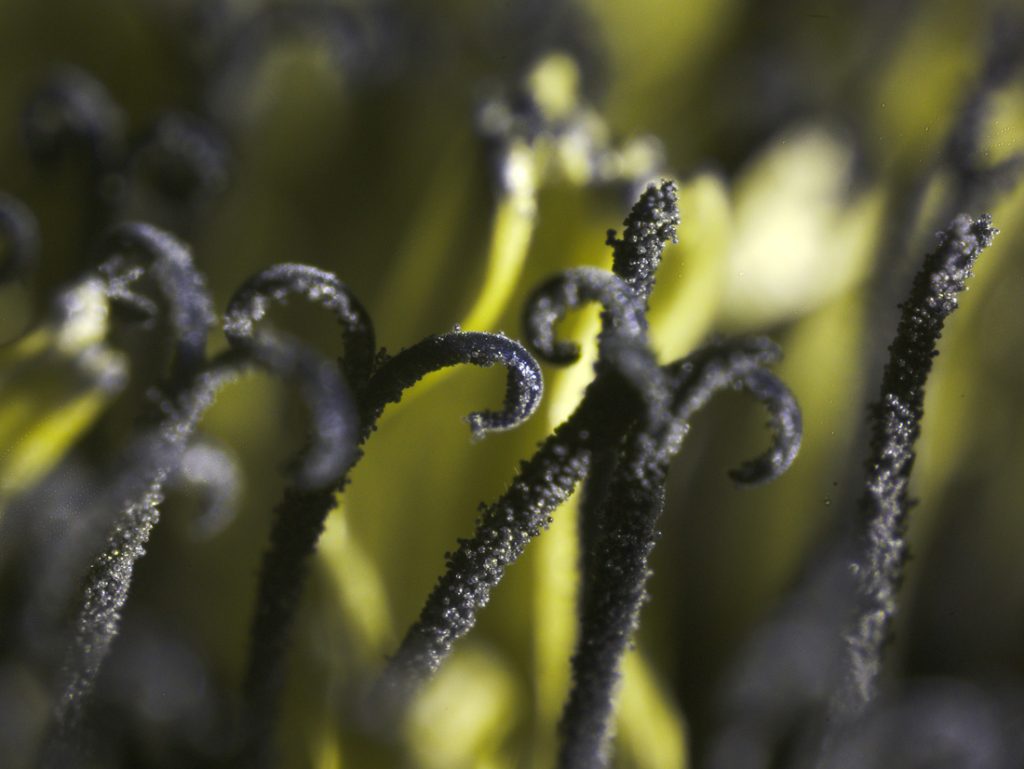
Now you may be wondering why some parts of the flower look black. This is because they strongly absorb UV, hence they come out black. What isn’t obvious on the images at the resolution here, is that this type of macro work shows up every little bit of dirt on your sensor. The sensor is filthy, and needs a damn good clean……
The images above were reduced in resolution for sharing (the originals from the Nikon d810 are massive – 8674×5792). How about up close within the image at higher resolution? Below are some crops from the images above, shown at actual pixel resolution.
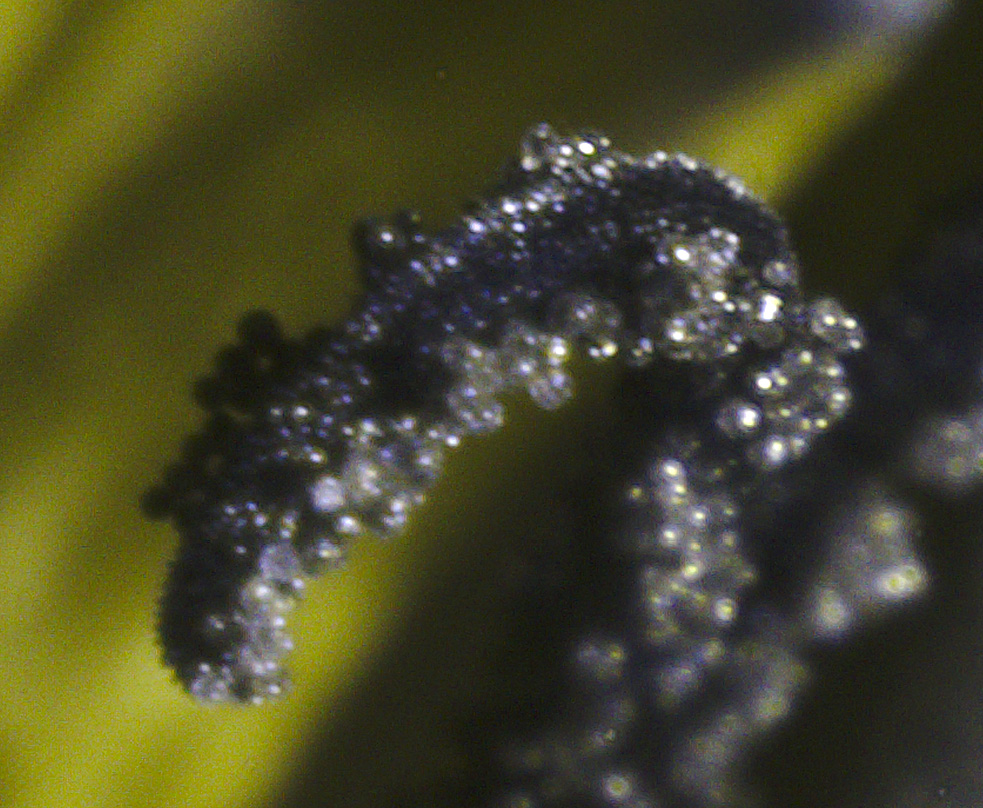


The round features on the parts of the Dandelion are individual pollen grains. In the middle image of the above three, towards the left of the shot in the out of focus region, you can see small round dots. This is some of the dirt on the sensor.
Now you may think, “well those aren’t that sharp”. This was done with a camera on a tripod, on wooden floor boards, and the light source on the same bench as the subject (the light source has a massive fan in it to try and keep it from overheating), and the exposure times were about 2s. As you can imagine, at this level of magnification, trying to keep things from not moving is a huge problem. Every little bit of vibration is amplified. Also, these were single shots, no focus stacking, taken with the lens at about f8, so the depth of field is absolutely tiny. Focus stacking would help get more of the subject in focus, but that is something I have yet to play with.
Another thing to note is the 25mm Luminar exhibited virtually no focus shift between the visible and UV regions. I was able to focus it using the view finder, and then take the shot in UV, and the same parts of the flower were in focus.
Overall, I’m really impressed with the Zeiss Luminar 25mm f3.5 in UV, and it has huge potential for macro photography (I’m sure it’ll be great for visible light work too). If you want to know more about this or my other work, you can reach me here.
